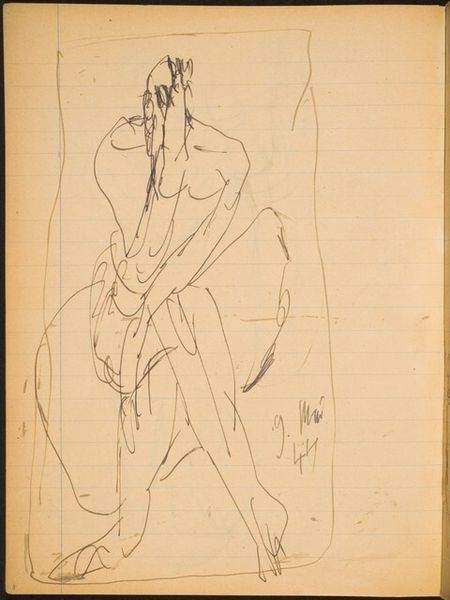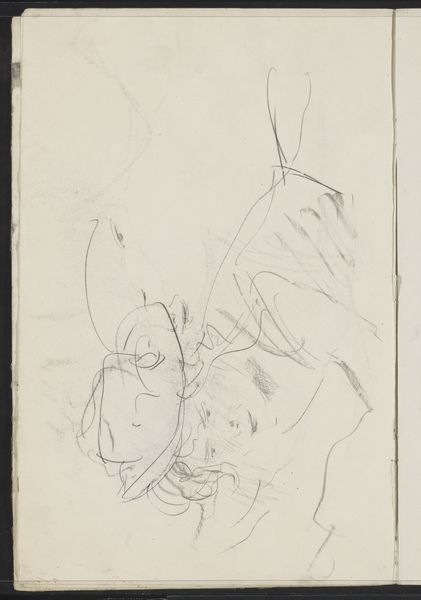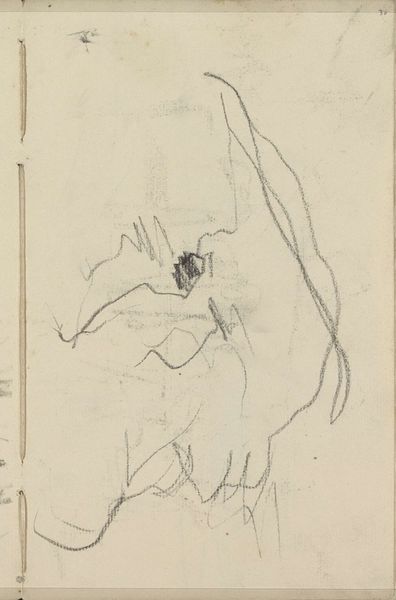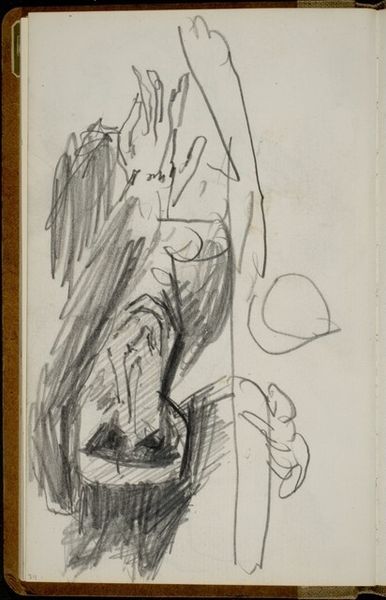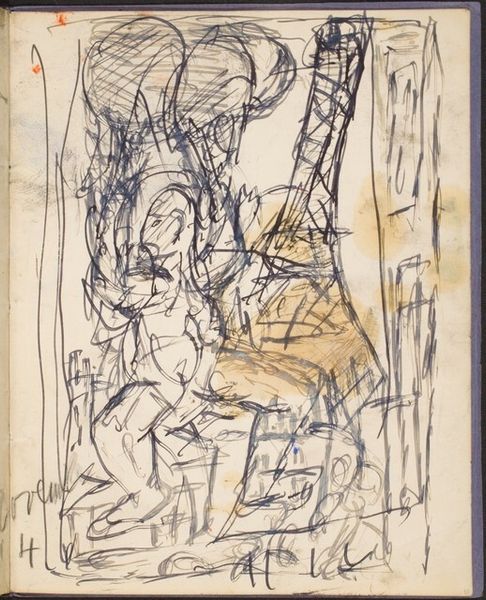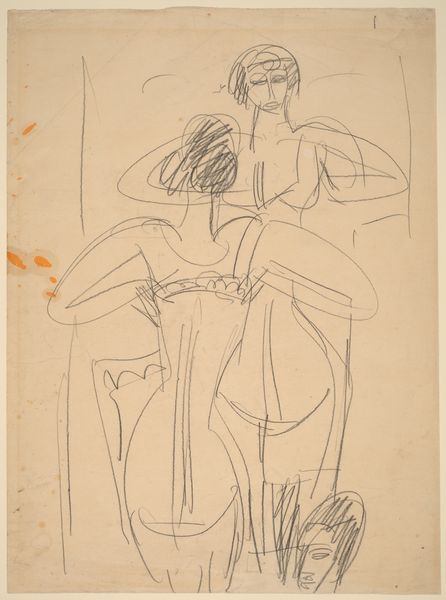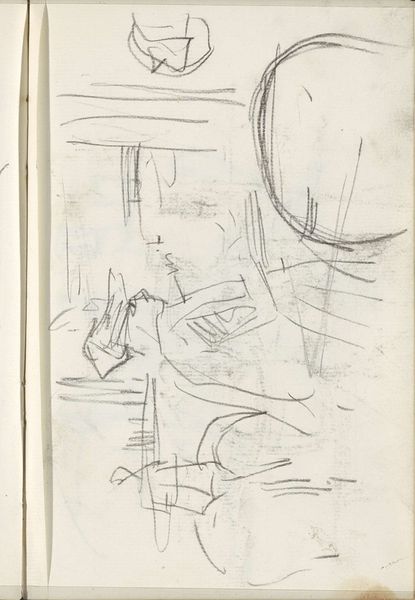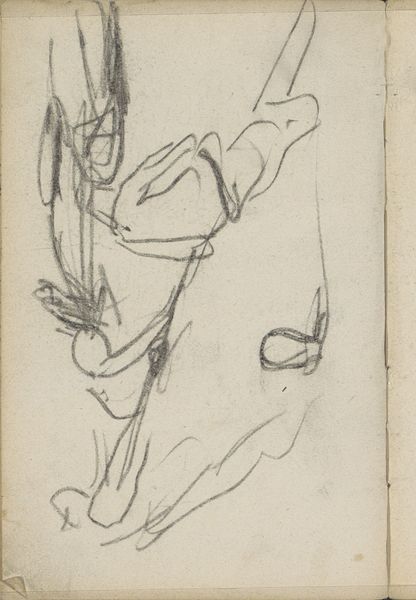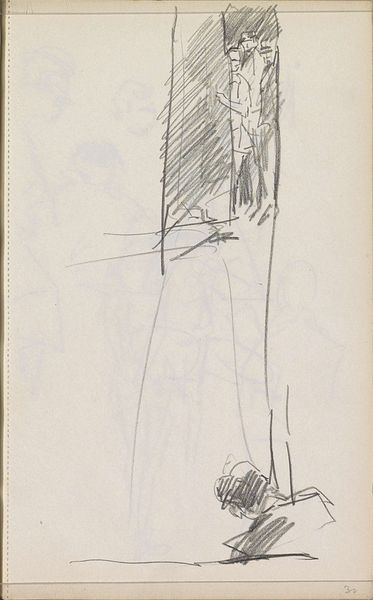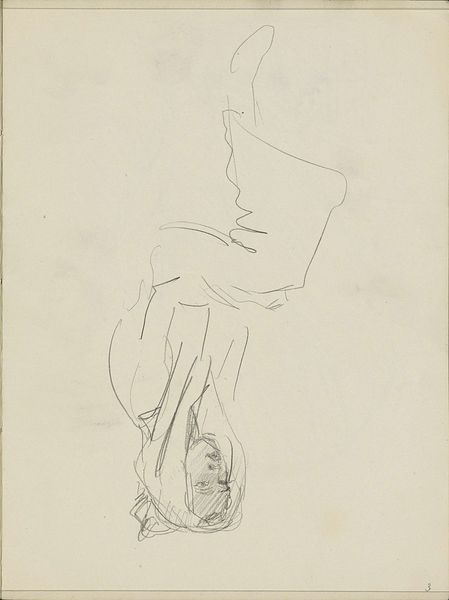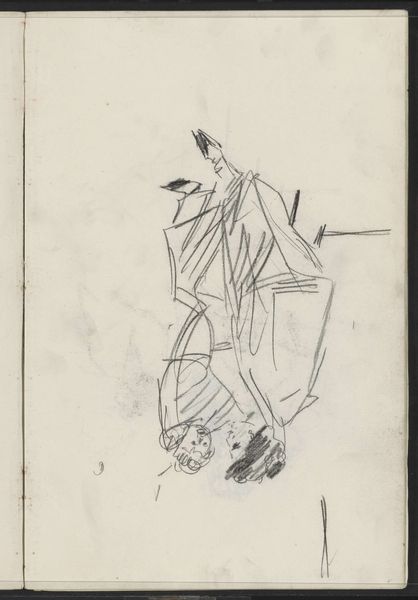![Frau mit Hand vor dem Gesicht (Woman Covering her Face) [p. 34] by Max Beckmann](/_next/image?url=https%3A%2F%2Fd2w8kbdekdi1gv.cloudfront.net%2FeyJidWNrZXQiOiAiYXJ0ZXJhLWltYWdlcy1idWNrZXQiLCAia2V5IjogImFydHdvcmtzLzAzOTJiYjhiLTdjYjktNGRiYy1hYjJiLTE1YzIxODE1MDNmYS8wMzkyYmI4Yi03Y2I5LTRkYmMtYWIyYi0xNWMyMTgxNTAzZmFfZnVsbC5qcGciLCAiZWRpdHMiOiB7InJlc2l6ZSI6IHsid2lkdGgiOiAxOTIwLCAiaGVpZ2h0IjogMTkyMCwgImZpdCI6ICJpbnNpZGUifX19&w=1080&q=75)
Frau mit Hand vor dem Gesicht (Woman Covering her Face) [p. 34] 1944 - 1949
0:00
0:00
Copyright: National Gallery of Art: CC0 1.0
Curator: This is a compelling ink drawing by Max Beckmann, titled "Frau mit Hand vor dem Gesicht," or "Woman Covering her Face." It's from his sketchbook, dating roughly from 1944 to 1949. Editor: My first impression is of profound unease. The starkness of the ink on paper, the agitated lines—it creates a visceral sense of anxiety. Curator: Absolutely. Notice the strategic use of line weight and density. The artist masterfully directs our gaze by varying the pen pressure, building visual interest where he wants it most. Observe, in particular, the darkest region clustered near the woman's… what appears to be, her lap? Editor: Indeed. It is striking how her face is obscured. In art historical terms, covering one's face has long symbolized shame, grief, or a desire for anonymity. In this context, perhaps, it speaks to the emotional turmoil of the post-war period. Beckmann painted throughout both World Wars; what continuities of psychological trauma appear? Curator: Precisely. The incomplete, sketchy quality is intrinsic to its Expressionist style, wouldn't you agree? Editor: No disagreement here. The dynamism within an apparently "unfinished" state brings to my mind similar aesthetic experiments from German Expressionists, such as Heckel or Kirchner. Beyond the technique, it's hard to shake off the sensation that the artist recorded raw and unprocessed feelings. There is great power in that directness. Is this an aesthetic of 'resistance', if one wants to decode its politics of its historical setting? Curator: I like that phrasing very much: "an aesthetic of resistance." The raw emotionality communicates both the woman's subjective feelings and her political, personal state, the experience of hiding or feeling vulnerable, exposed perhaps in a world that seemed increasingly incomprehensible to her. Editor: Exactly. It's as if, by obscuring her face, Beckmann invites us to project our own emotions, and perhaps our collective traumas, onto her. He is forcing us, indeed, to bear witness. What I shall carry forth are the layered messages in that gesture—how its ink lines perform like embodied language. Curator: A final reflection is on the material nature of the sketchbook itself, implying a sense of personal introspection and even constraint that shapes its impact.
Comments
No comments
Be the first to comment and join the conversation on the ultimate creative platform.


